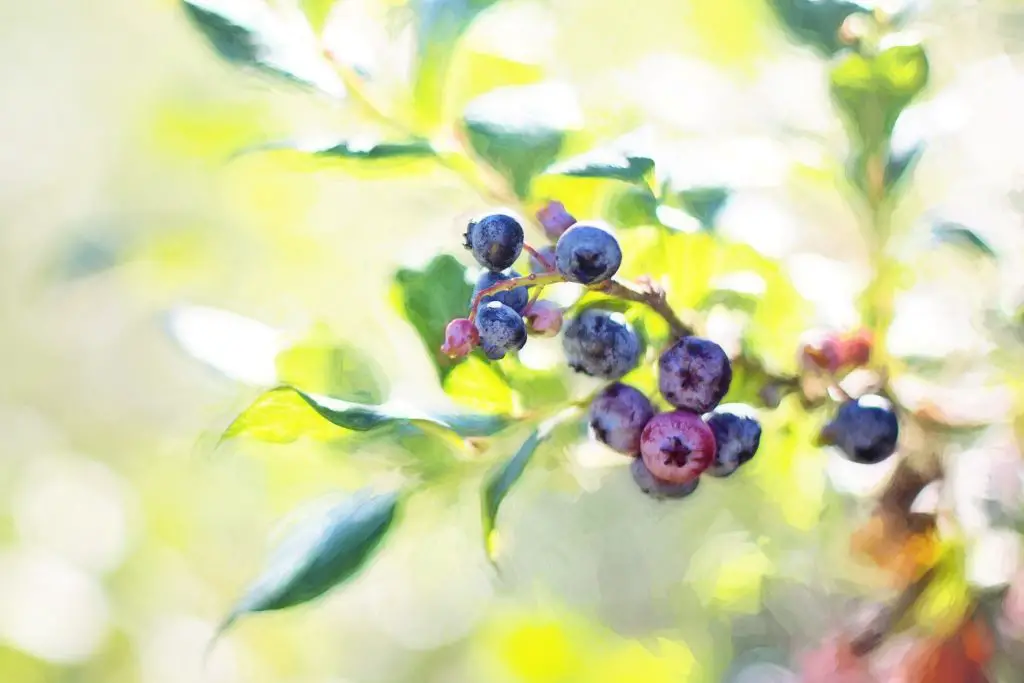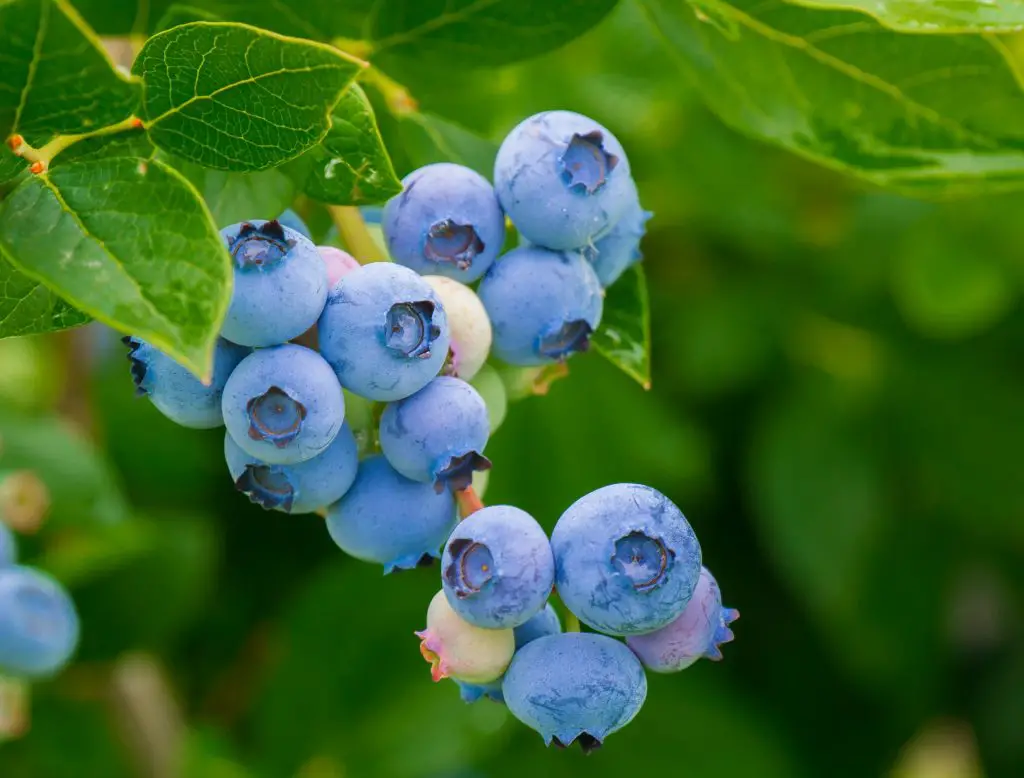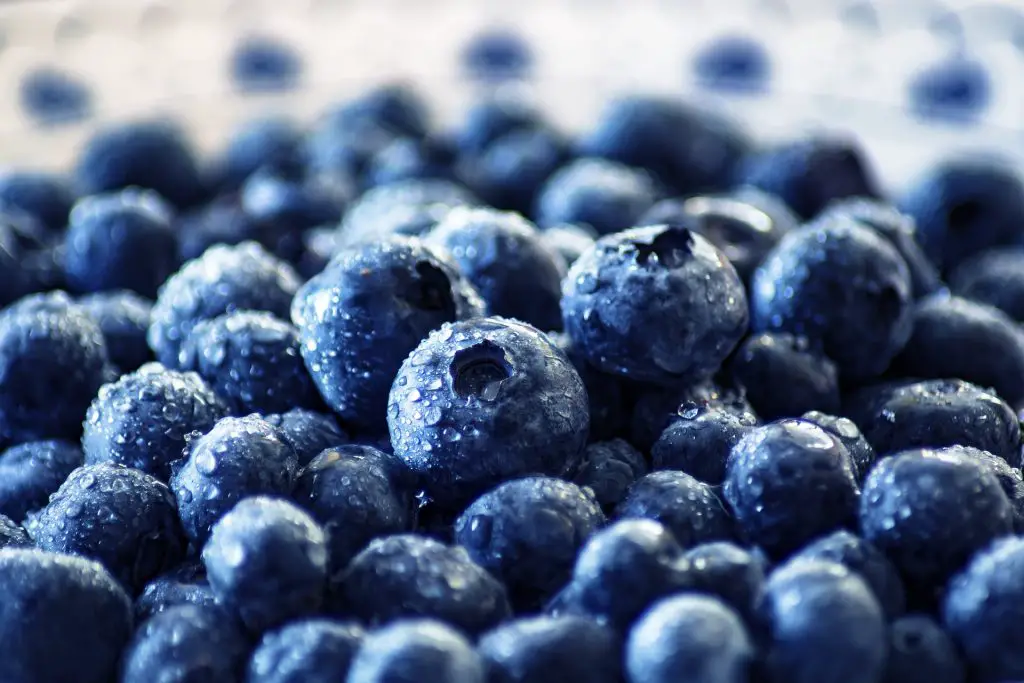How Much Does One Blueberry Bush Produce? Blueberries are one of the most popular soft fruits among fruit lovers. But, these fruits, for many people, are a luxury item because of their relatively high cost which makes them an attractive fruit to grow at home. However, when considering growing the plant at home the obvious question is how much does a Blueberry bush produce?
An established Blueberry plant will typically produce 8 lbs (4 kg) of fruit per season though this can vary. The plant normally takes 4 years to reach its peak yield. This yield can be maintained for many years provided that the plant is pruned annually and soil conditions remain favorable.
Newly planted Blueberry plants will take 1 to 2 years before they begin to produce fruit. They will produce fruit on stems that are between 1 and 6 years old with peak production being on 3 to 4-year-old growth. To maintain yield on mature plants it is necessary to remove unproductive stems.
How To Grow Blueberries
When growing Blueberries most gardeners tend to purchase plants rather than grow the plants from seeds. It is preferable to plant Blueberries in spring because they can be purchased as bare-root plants at this time of year which are cheaper. However, it is also possible to plant them in mid to late Autumn in Zone 6 or higher. In Zones 5 and below, it’s best to wait until early to mid-spring to plant.

When planting in very cold climates it is best to be selective about the varieties grown. A Blueberry trial conducted on the Kenai Peninsula, South of Anchorage, in Southcentral Alaska found 9 varieties that were suitable. These cultivars, which are listed below, are also grown successfully in the colder parts of the United States.
Recommended High Bush Varieties
- Duke
- Earliblue
- Patriot
Recommended Half High Bush Varieties
- Chippewa
- North Blue
- North Country
- Northland
- North Sky
- Polaris
To grow Blueberry plants successfully the key is to ensure that the soil conditions are acidic. The soil should ideally have a pH between 4.0 and 5.0 to optimize growth, if the soil isn’t acidic enough it will stunt the growth of the plant and in some extreme cases it will kill the plant. To test the soil it is ideal to use a pH meter rather than a pH kit as it is easier to use and is cheaper. Click here to see the latest price on Amazon.
If the soil needs to be acidified this can be done by mixing a small amount of granulated sulfur into the soil several months before planting as it takes time for the Sulfur to reduce the pH of the soil. Other natural materials such as peat moss, pine bark, or needles will also help acidify your soil.

If you live an area with extremely alkaline soil it may be easier to grow the plants in containers as it allows you to tailor the soil conditions to the plants. However, it is important to be aware that as Blueberry plants are relatively shallow-rooted the plant requires a soil that retains moisture well. As such you may want to consider adding hydrogels to improve moisture retention. To learn more about using Hydrogels click here.
When selecting a location it is preferable that it is a sunny and also relatively sheltered spot. Blueberry plants can tolerate some shade however, higher yields are obtained with increased sunlight.
Additionally, the yield of individual plants can be improved by planting multiple bushes. While Blueberries are self-fertile the extent of pollination of flowers improves if there is a second plant nearby.
Blueberry bushes can be planted as close as 2 or 2.5 feet (60 to 70 cm) if you want to create a solid hedge, however, if you are growing them individually planting them around 4 ft apart is ideal.
When placing them in the ground it is best to dig a hole that is about twice as wide and twice as deep as the roots of the plant. The rootball of the plant should be planted approximately level with the surface of the soil.
To ensure that the soil remains moist place a thick layer of mulch around the base of the plant and water regularly particularly in summer. Fertilizer should be applied every 3 to 6 months after planting to ensure that there are adequate nutrients available.
Caring Blueberry Bushes
As mentioned above the priority for Blueberry plants is to maintain a moist acidic soil. In regions where the soils are not naturally acidic, this will require the pH of the soil to be checked once a year to ensure that the acidic conditions are maintained. In regions where the soil is normally neutral or alkaline, you will find that the pH will begin to rise over time and further adjustment with Sulfur may be required.

In terms of pruning, it is not required until the plant is around 3 to 4 years old. At this stage pruning stimulates the production of new shoots as wood older than 5 to 6 years will begin to decline in productivity.
Pruning should be done in late winter or early spring before there are signs of new growth. Start by removing dead or broken shoots and also any that are crossing. For Highbush varieties remove any stems that are crowding the center of the plant to create a vase-like structure that is relatively open allowing additional air and light into the center of the plant. Also, remove any wood that is more than 6 years old.
For lowbush Blueberries, any unwanted stems should be cut to ground level. However, be aware that one-year-old stems will not bear fruit so it is necessary to leave half or two-thirds of the plant untouched to ensure you have fruit year on year.
In the fruiting season to optimize the yield, it is important to protect the fruit with netting to avoid the bird getting to the fruit before you do.
How To Store Blueberries
Once your plants’ beings to crop it will be necessary to store your harvest. Blueberries are best stored in the fridge in a container with air holes. In these conditions, they will store for around 2 weeks.
If you have a glut of Berries they can also be frozen for later use. The easiest way to do this is to store them in a resealable sandwich bag. When doing this it is best to regularly pick the berries when they are at their best and store them immediately rather than waiting until you have a whole heap of them to freeze. You will find that this improves both the quality and quantity of fruit stored.
